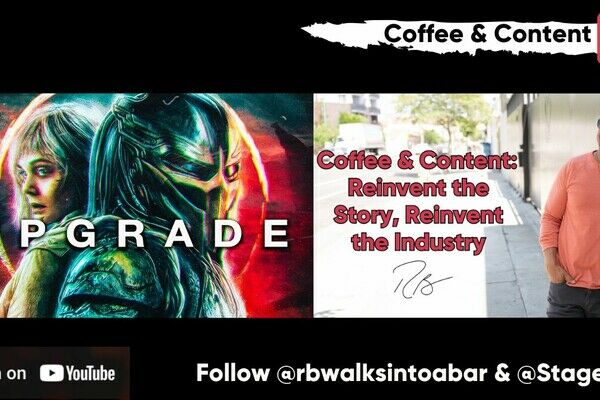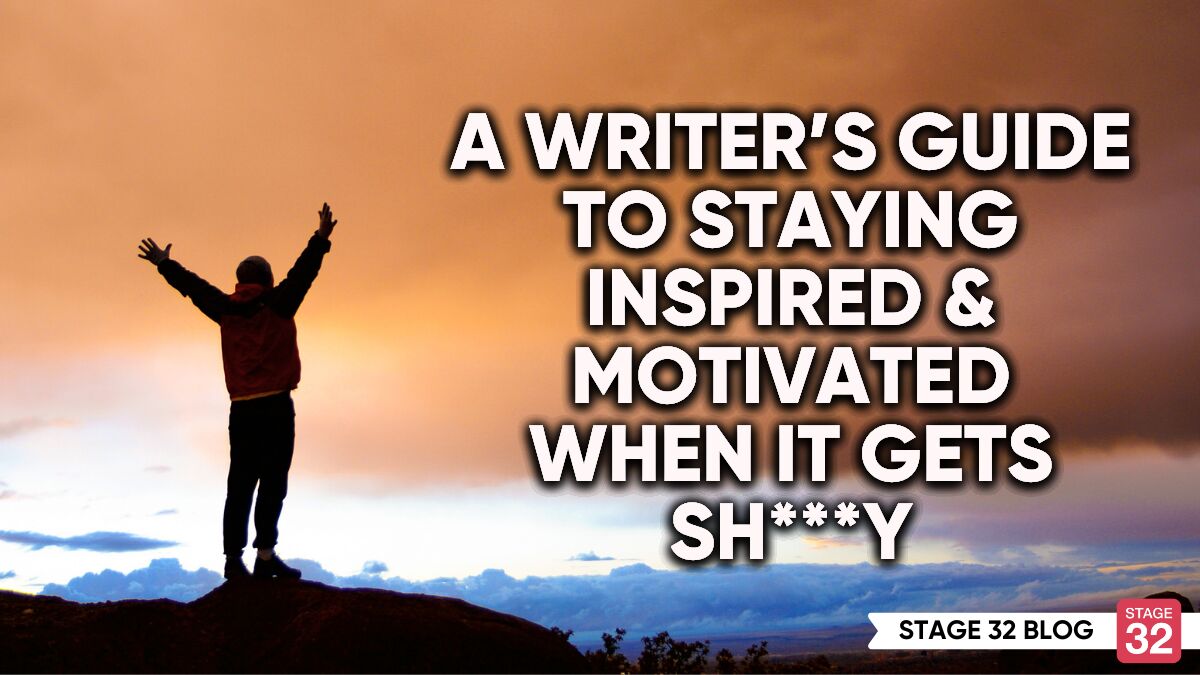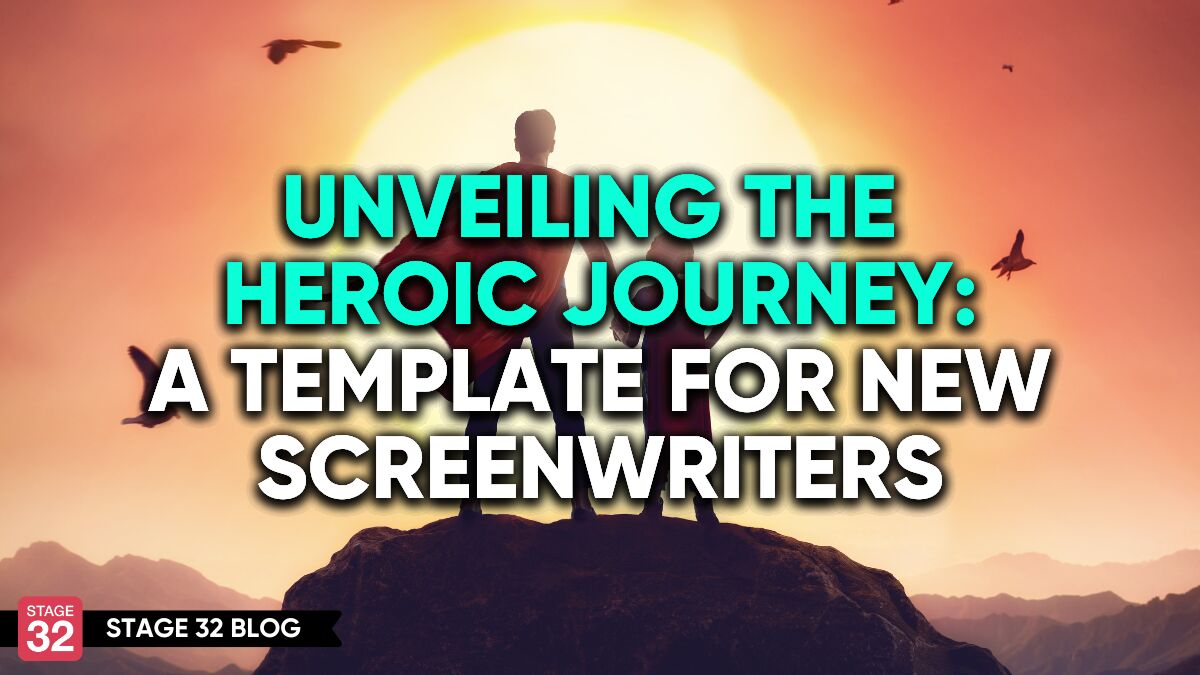Unveiling the Heroic Journey: A Template for New Screenwriters
NOTE: To bypass all potential arguments or misunderstandings, I have renamed the Hero’s Journey to the Heroic Journey to encompass both genders.
When you decide to master storytelling, you step into a new environment known as the Heroic Journey. It is an eternal narrative structure that has shaped countless tales of triumph and self-actualization (on-screen). As you venture into the heart of this narrative archetype, you experience what is known as the Heroic Quest, which is composed of the call to adventure, trials, and tribulations, and the ultimate victory that resonates with audiences of all ages.
From ancient myths to modern blockbusters, the Heroic Journey serves as a guiding light, illuminating the path for you to craft compelling narratives that captivate and inspire.

Embarking on the Heroic Journey
Discovering the Path of Screenwriting
Screenwriting is not just about putting words on a page; it's about breathing life into a story that will move the audience. When you start out, it's essential to understand that every script is a journey, not just for your characters, but for you as a writer. The path of screenwriting is slow and tedious, laden with insights and transformations. You will start by studying scripts, noting how they translate to the screen, and the impact they have. This observation will serve as the ART (how you view reality). Next, you will grasp the basics of structure, character development, and dialogue. This observation (tools) will serve as the CRAFT (how you express reality).
As you dive deeper, you'll find your unique voice and, as noted by so many Industry Insiders:
- Your VOICE is what gets you NOTICED, Your ART is what gets you meetings, but it is Your CRAFT that gets you paid.
Remember, every screenplay you write is a step forward in your career, a piece of the map to your personal Heroic Journey in the craft of screenwriting.
The Origin of a Timeless Template
The Heroic Journey, also known as the monomyth, is not a new concept; its roots are as ancient as storytelling itself. This timeless template was identified by Joseph Campbell, who saw a common pattern in myths and stories from around the world. According to Campbell, this universal narrative reflects the fundamental structure of human experience and our collective quest for self-discovery and transformation.
The monomyth begins with the Hero or Heroine receiving a call to adventure, then facing challenges, receiving aid, experiencing revelation, and finally returning transformed. This pattern is not just an academic theory; it's a reflection of the life journey.
For screenwriters, understanding this origin provides a rich source of inspiration and a template that resonates deeply with the human spirit, making your stories more relatable and impactful.

Decoding the Heroic Journey
The Stages of the Hero's Quest
The Heroic Journey comprises several stages, each signifying a pivotal point in the narrative arc.
- It begins with the 'Call to Adventure,' where the Hero/Heroine is invited to leave their ordinary world.
- This is followed by 'Refusal of the Call,' which underscores the Hero/Heroine’s hesitation.
- The 'Meeting with the Mentor' provides the Hero/Heroine with guidance,
- The 'Crossing the First Threshold' signifies the Hero/Heroine’s commitment to the journey.
- The 'Tests, Allies, and Enemies' stage presents obstacles that shape the Hero/Heroine.
- The Hero/Heroine then reaches the 'Approach to the Inmost Cave,' facing the greatest challenge in the 'Ordeal.'
- After acquiring the 'Reward,' the Hero/Heroine must make the 'Road Back' to their ordinary world, culminating in the 'Resurrection,' a severe test where they emerge transformed.
- Finally, the 'Return with the Elixir' marks the Hero/Heroine’s triumph, bringing wisdom or power back home.
The Heroic Journey in Screenwriting
In screenwriting, the Heroic Journey is more than a structure; it's the backbone of storytelling that guides the audience through the emotional and psychological transformation of the Main Character. As a screenwriter, you must weave this journey into your screenplay to create a narrative that is both compelling and cathartic.
Start by visualizing your Hero/Heroine’s internal and external goals.
- What do they yearn for?
- What fears must they overcome?
Each stage of the Heroic Journey reflects these struggles and growth. Your script should take the audience along as the Hero/Heroine faces trials, finds allies, overcomes adversity, and ultimately transforms. This journey does not just move the plot forward; it also drives the character development, ensuring that by the end, your Hero/Heroine emerges as a changed individual, offering the audience a sense of closure and satisfaction.

Tracing Roots: The Heroic Journey Through Time
Mythology: The Birthplace of the Heroic Journey
Mythology is the fertile ground from which the Heroic Journey sprouted. Ancient myths from Ebla, Sumer, Egypt, and beyond have told stories of Heroes/Heroines who embark on great quests. These tales share a common thread: a powerful narrative pattern where Heroes/Heroines are called to adventure, face formidable challenges, receive divine assistance, suffer a symbolic death, and are reborn with new knowledge or power.
This pattern was observed and crystallized into the Heroic Journey template because it reflects fundamental human experiences. Myths were the ancients' way of making sense of the world and their place in it, just as stories do for us today. For screenwriters, these myths are a treasure trove of motifs, character arcs, and plot points that continue to resonate with audiences because they speak to the enduring human spirit.
The Heroic Journey's Evolution in Literature and Film
The Heroic Journey has evolved beyond the bounds of mythology into a cornerstone of modern literature and film. This evolution showcases the adaptability of the framework to diverse stories and mediums.
In literature, classics like “Don Quixote” have paved the way for contemporary novels where protagonists undergo transformative journeys. In film, this narrative structure has been pivotal in shaping some of the most iconic cinema. Movies like "Star Wars" and "The Lord of the Rings" are prime examples of the Heroic Journey adapted for the screen, resonating with audiences and inspiring countless filmmakers.
This evolution also reflects changes in society and the varied experiences of humanity, allowing for more inclusive and varied interpretations of what a 'Hero' or ‘Heroine’ is. Screenwriters today continue to draw from this rich legacy, finding new ways to express the universal quest for growth and meaning through their cinematic stories.

Crafting Your Own Heroic Journey
When to Use the Heroic Journey in Your Script
Deciding when to use the Heroic Journey in your script hinges on the kind of story you aim to tell. If your narrative revolves around personal growth, self-discovery, or an epic adventure, this template can serve as an effective template. It's ideal for stories that involve a clear transformation of the protagonist, as it provides a structured way to showcase their evolution.
However, remember that the Heroic Journey is elastic, not rigid. It should inspire the flow of your story, not constrain it. Use it to guide your character's arc and ensure each plot point resonates with emotional depth.
Most importantly, use it when you want the audience to embark on the journey alongside your Hero/Heroine, feeling every victory, setback, and revelation as their own.
Breaking the Mold: Alternatives to the Heroic Journey
While the Heroic Journey is a powerful tool for storytelling, it's not the only path a screenwriter can take. There are several alternatives to consider if you're looking to break the mold. For instance, you might explore non-linear narratives that challenge the audience to piece the story together, or ensemble casts that focus on multiple characters' journeys rather than just one central character.
Another approach is the Anti-Heroic journey, which flips the traditional model on its head, focusing on a flawed character's struggle against their own nature. Additionally, consider stories that revolve around internal conflict without a clear external adventure or quest. These alternatives can offer fresh perspectives and allow for more complex character development.
Always remember that structure should serve the story you're telling and the emotional experience you want to convey to the audience.

Drawing Inspiration for Your Screenwriting
Learning from the Masters of the Craft
As a new screenwriter, one of the best ways to hone your craft is to learn from those who have mastered it. Studying the works of acclaimed screenwriters provides invaluable insights into the nuances of storytelling. First, examine scripts that have stood the test of time, and analyze how those writers used the Heroic Journey to create their impactful narratives.
Next, pay attention to the dialogue, pacing, and character development. Notice how the masters build tension and guide the audience through the emotional arc of the story. Don't just read the scripts; watch the films. Observe how they translate from page to screen, and understand the collaborative nature of filmmaking.
Next, explore the various ways the masters adapt the Heroic Journey to fit their unique stories. Ultimately, use these lessons as a springboard for your own creative expression.
Diverse Influences in Modern Storytelling
In today's globalized world, you have the unique opportunity to draw from a wealth of diverse influences. Your stories can be enriched by embracing different cultures, histories, and perspectives, which provide fresh takes on the Heroic Journey. By incorporating elements from various traditions, you create narratives that resonate with a broader audience and reflect the multicultural nature of the human experience.
Consider how the Heroic Journey might be interpreted in other cultures, and how these interpretations will influence your own storytelling. Modern storytelling thrives on this diversity, allowing for the exploration of universal themes through a more inclusive lens. Embrace these influences, but also remain aware of the responsibility that comes with representing different cultures. Research thoroughly and approach your influences with respect and authenticity. By doing so, you'll become a master and contribute to a richer, more diverse cinematic landscape.
Let's hear your thoughts in the comments below!
Got an idea for a post? Or have you collaborated with Stage 32 members to create a project? We'd love to hear about it. Email Ashley at blog@stage32.com and let's get your post published!
Please help support your fellow Stage 32ers by sharing this on social. Check out the social media buttons at the top to share on Instagram @stage32 Twitter @stage32 Facebook @stage32 and LinkedIn @stage-32
| Celebrate the May 2024 Stage 32 Community’s Successes! |
| A Writer’s Guide To Staying Inspired & Motivated When It Gets SH***Y |
Search Stage 32 Blog
There are now 4041 blog posts for you to enjoy. Search them all by tags below.
Acting, Advice, Cinematography, Coffee & Content, Composing, Contests, Distribution, Featured, Filmmaking, Financing, Inspirational, Networking, Producing, Screenwriting, Success Stories, Tips, Trending,Relevant Tags
Recommended Articles

Insider Intel: Packaging your Project- The Chicken or the Egg Dilemma

Stage 32 + DramaBox Join Forces to Launch World's First Vertical Drama Incubator

A Practical Guide for Actors: Tips & Advice Every Performer Should Know

Coffee & Content: Reinvent the Story, Reinvent the Industry

4 Reasons To Have Audio Description On Your Film

Making Our First No-Budget Feature: The Pure Vortex Production Chaos (Part 2)

Stage 32 Certification Featured In IndieWire!

Find Your Footing on Stage 32: Join Our December Community Open House

Happy Thanksgiving From Stage 32: We Are Thankful For YOU






